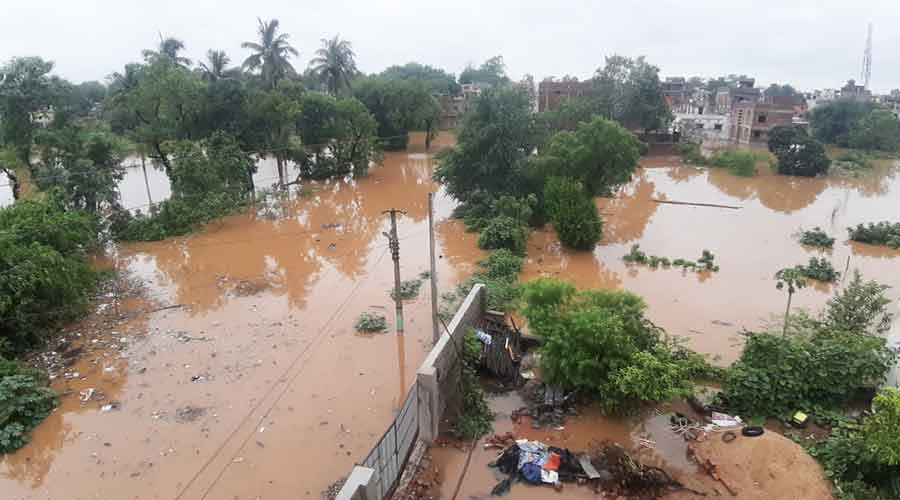Cyclone Yaas, which moved into Jharkhand from Odisha past midnight on Thursday, triggered heavy rainfall across the state causing floods in low-lying areas even as the storm weakened, as forecast, into a depression while moving further north.
Two persons, including an 11-month-old boy, died after a wall collapsed on them at their house at Jagannathpur in Ranchi district due to incessant rain. Most rivers of the state, including the Subernarekha, were flowing above the danger mark.
In Tamar, over 40km from Ranchi, a bridge over the Tajna river connecting Bundu and Sonahatu blocks, caved in disrupting local traffic movement.
In Kolhan, over 1,000 people have had to be evacuated and moved to safe zones, officials said.
Head of Ranchi Met Centre, Abhishek Anand said, "The cyclone weakened into a depression as it entered southern Jharkhand from Odisha and moved northwards. This afternoon (Thursday) it was over central parts of Jharkhand, about 20km east of Ranchi and 95km southwest of Jamshedpur. The system was moving northwards and is likely to further weaken in the next 24 hours."
Southern Jharkhand bore the brunt of Yaas’s fury on Thursday. At Simdega, an elderly person sustained serious injuries after branches of a tree fell on him on Thursday morning.
Medininagar at Daltonganj, the Palamau headquarters, experienced a sudden flash-flood-like situation as the water from the Koel river crossed the danger mark in the afternoon.
Officials of the state disaster management department said that in Kolhan around 1,000 people had been evacuated and moved to government buildings used as shelters after water inundated several low-lying areas.
"Water levels of both Kharkai and the connecting Subernarekha rivers crossed the danger mark due to the opening of sluice gates at Bankabal dam in Odisha," said an official as reports came in that more Kolhan areas had been flooded by the evening.
Electricity cables were snapped in several parts of the state, causing disruption in power supply. The state power board officials said workers were on the job to restore supply as soon as possible.
NDRF teams had to be deployed for rescue operations as water from the swollen Subernarekha and Kharkai rivers entered several low-lying areas in the Kolhan region, including Bagbera, Jugsalai, Mango (in East Singhbhum) and Kumardungi and Chakradharpur in West Singhbhum.
Officials said water entered over 300 houses, displacing over 14,000 people in East Singhbhum. Deputy commissioner of East Singhbhum Suraj Kumar and his officials inspected the affected areas and planned relief and rehabilitation measures.

The submerged Naya Basti in Bagbera which encountered a flashflood on Thursday. Picture by Bhola Prasad
As the cyclone, which had weakened into a depression, was moving northwards on Thursday, IMD issued a heavy rain alert in Garhwa, Palamau, Chatra, Latehar, Hazaribagh, Koderma and several other districts for the next 24 hours.
Till Thursday evening, Chaibasa in West Singhbhum topped the rain chart with 207.8 mm followed by Mandar which witnessed 182.2 mm rainfall. The IMD observatory in capital Ranchi recorded 151mm while Chakradharpur in West Singhbhum saw 133.6 mm rain.
Torpa in Ranchi district and Kuru in Lohardaga experienced over 110 mm of rain.
The local IMD Met centre in Jamshedpur recorded 109 mm of rain the same as that of adjoining Seraikela-Kharswan.
Ramgarh recorded around 95 mm of rain while Chhatra got 82.4 mm.
Met data suggests that several other places in Ranchi, Bokaro and Dhanbad districts experienced heavy rainfall between 65 and 85mm.











